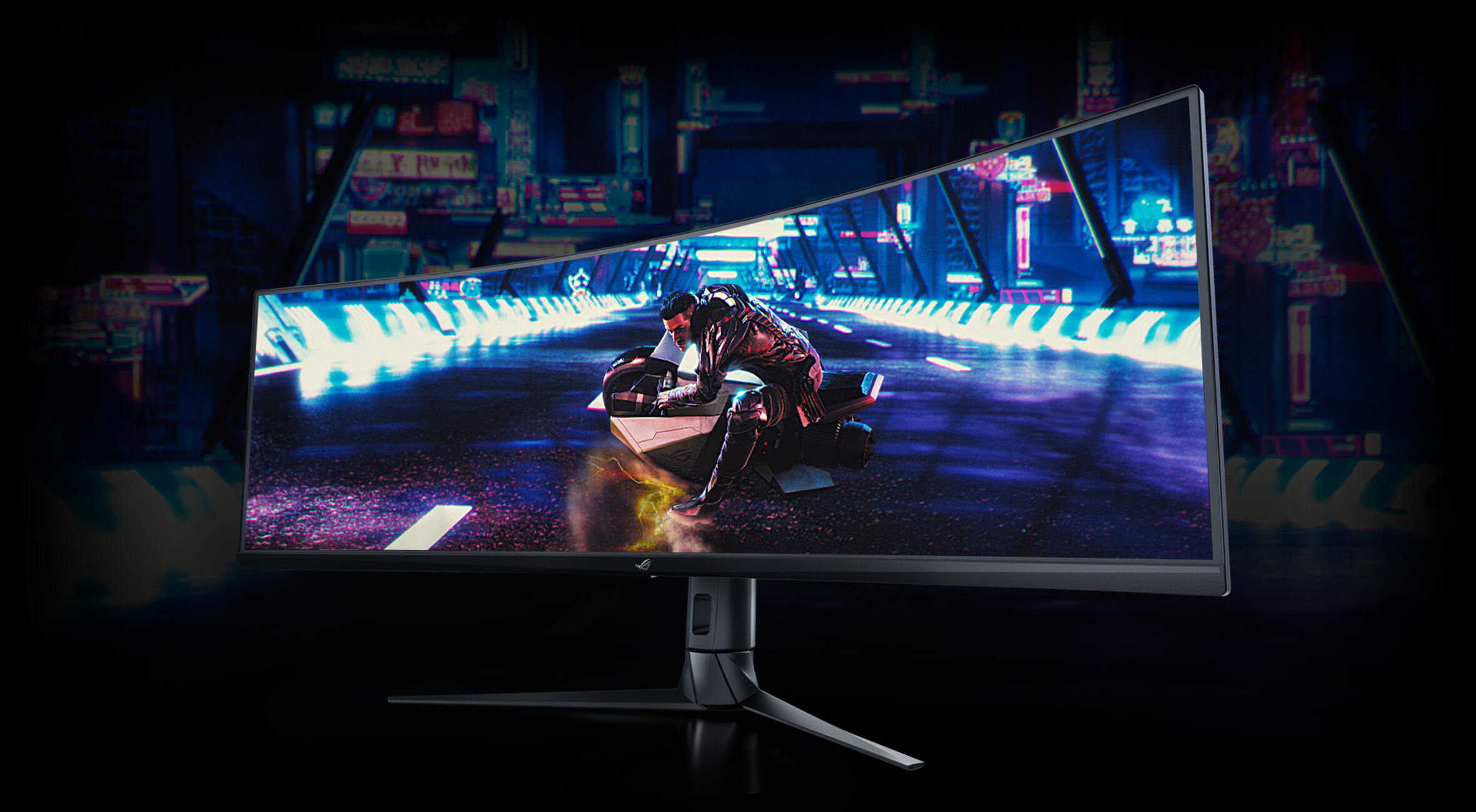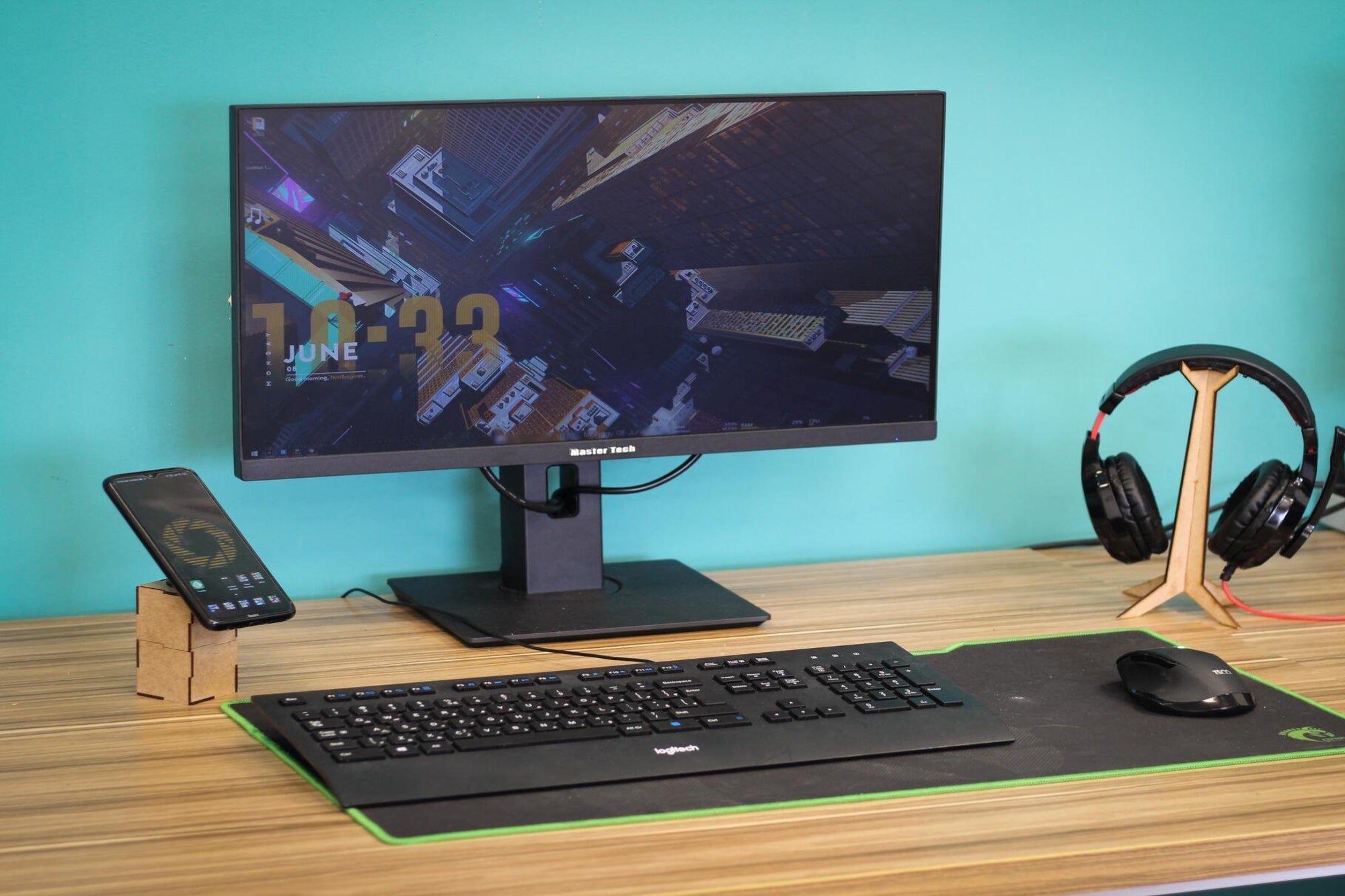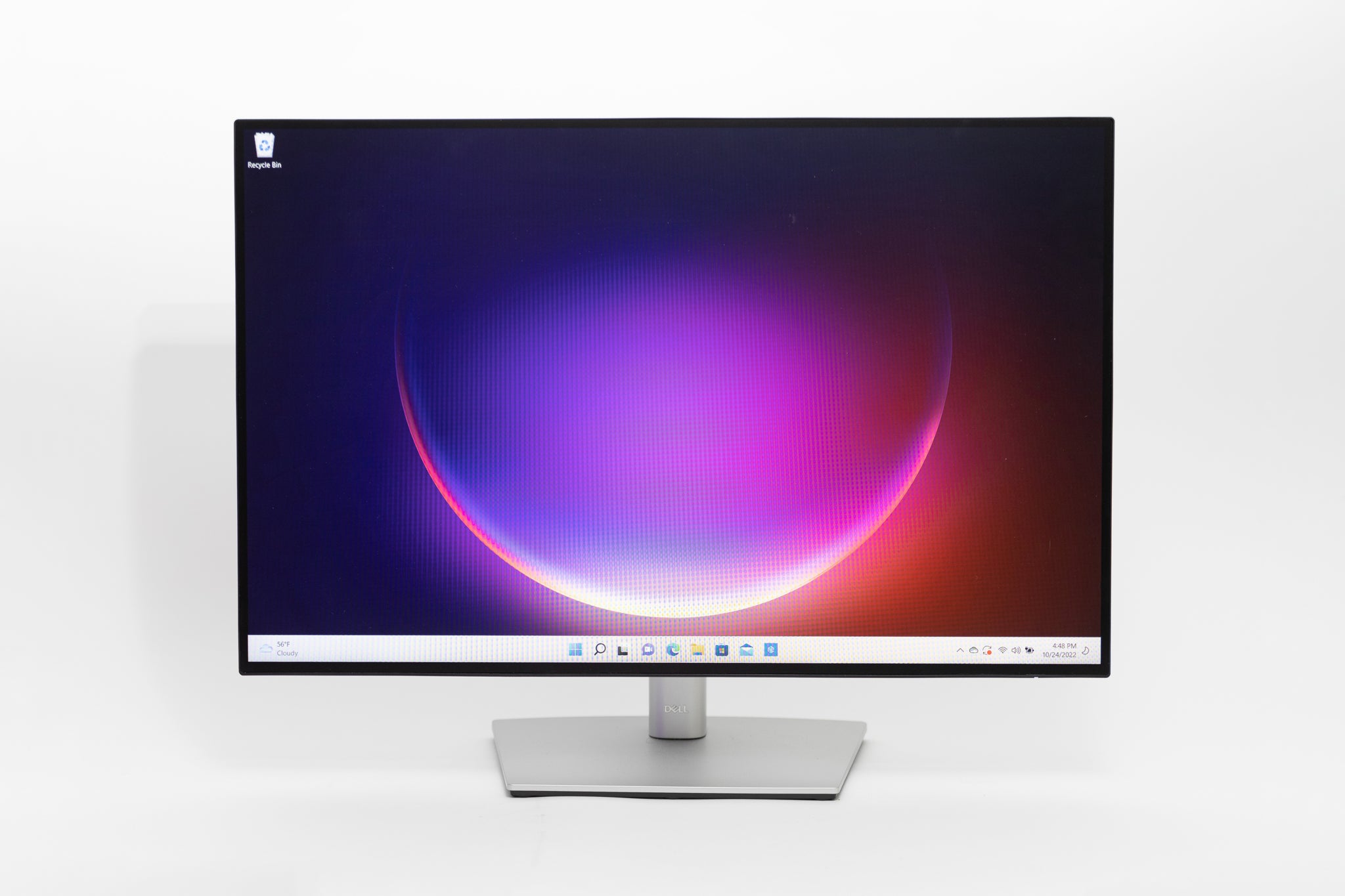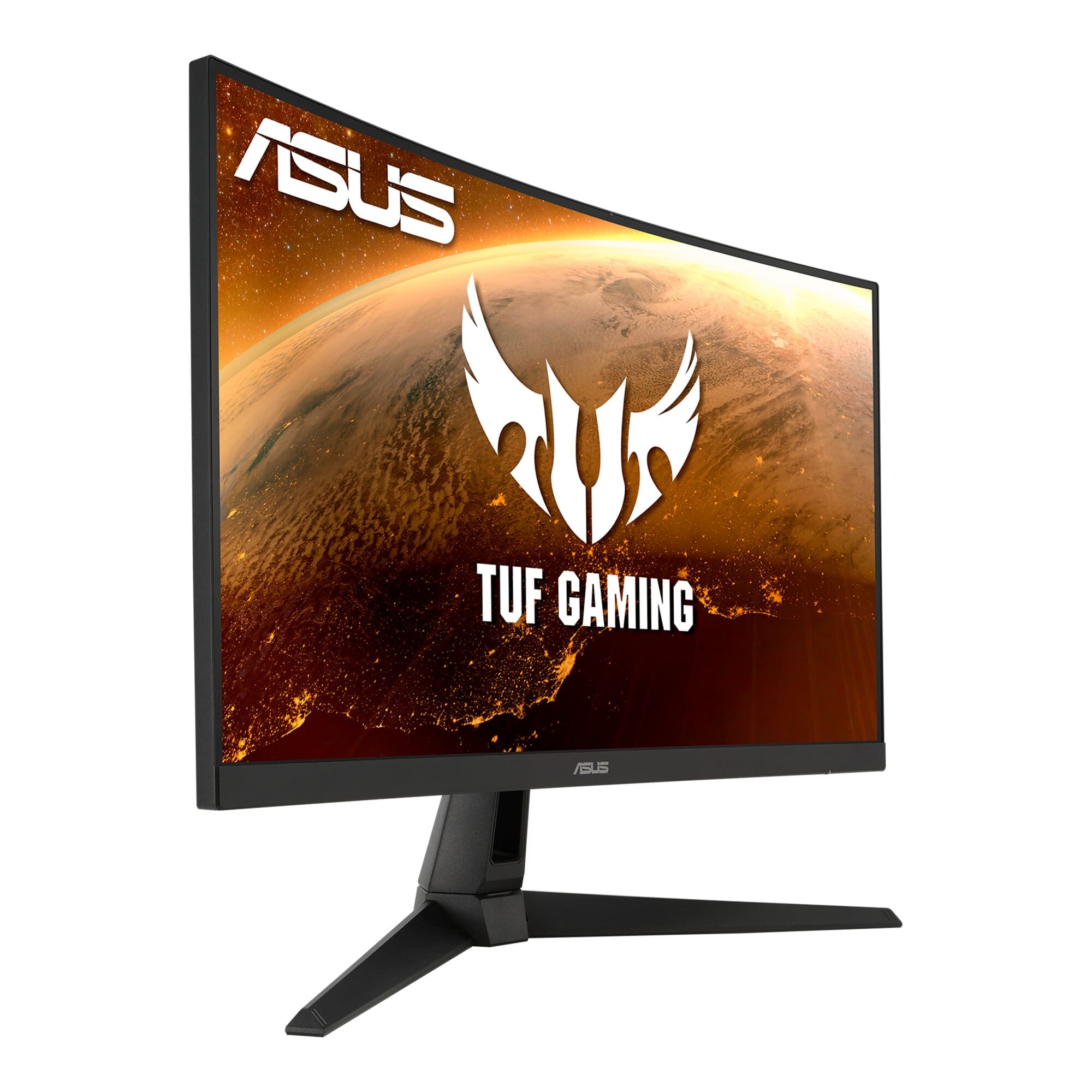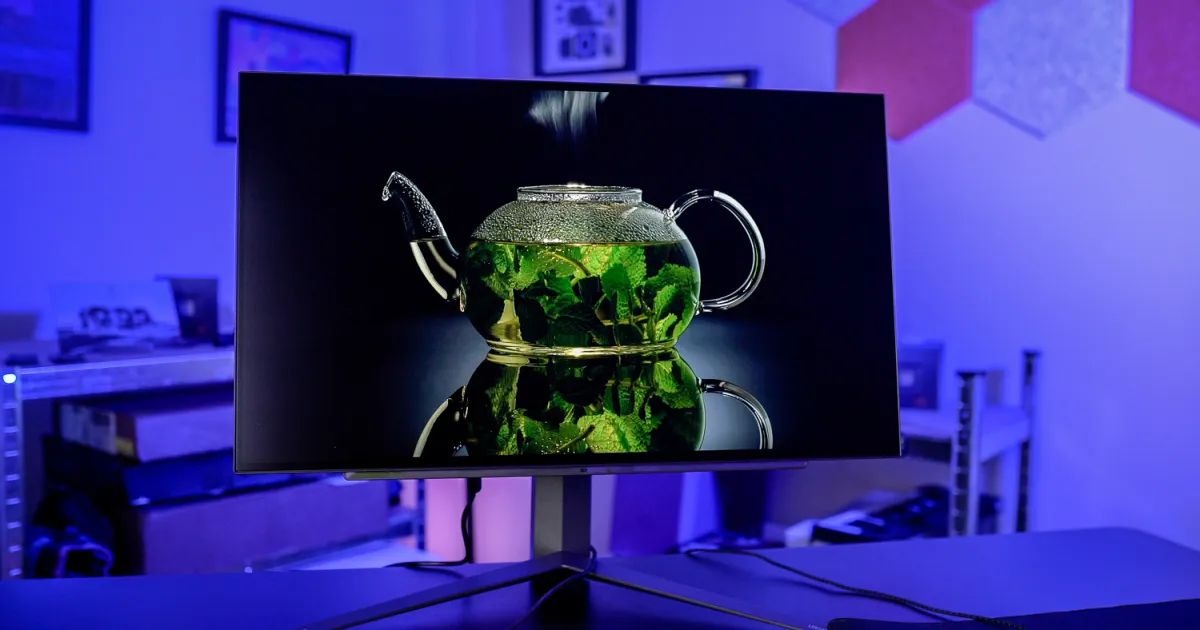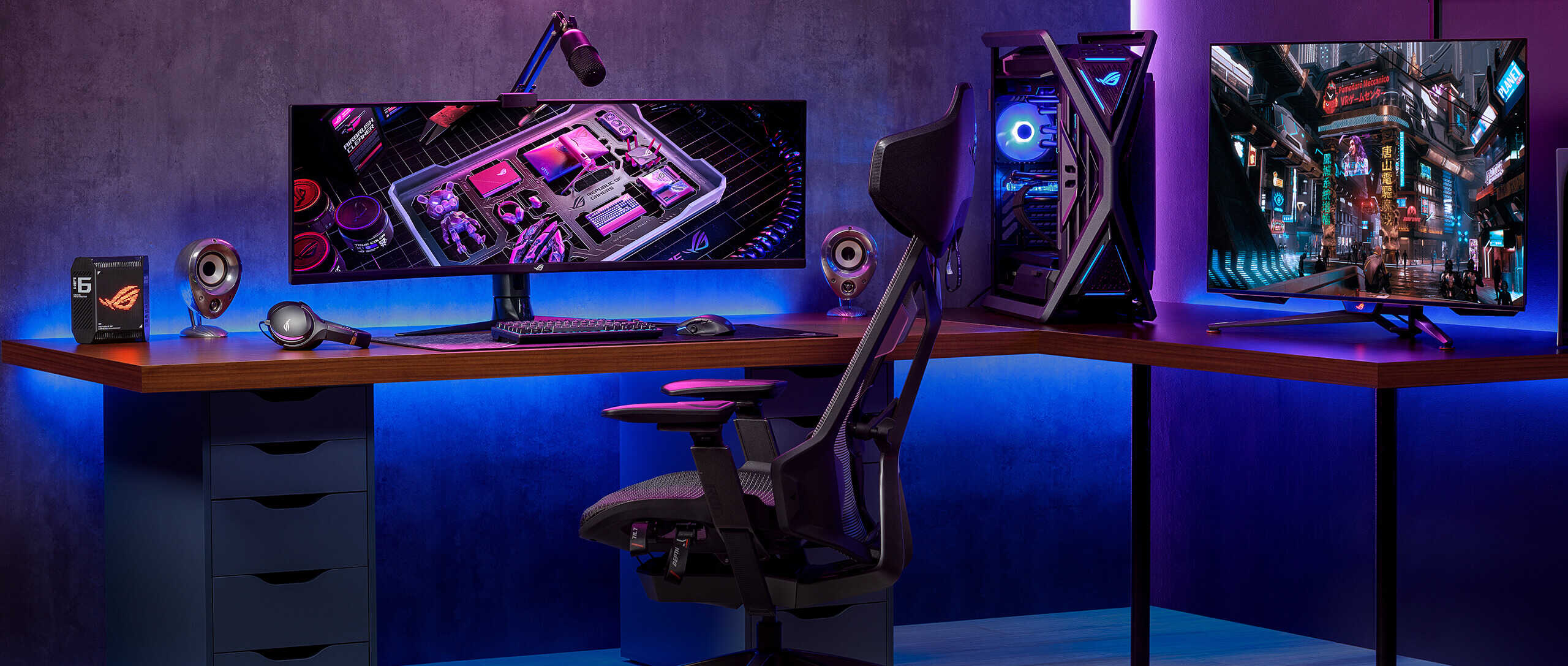Introduction
Welcome to this comprehensive guide on how to wall mount an Asus gaming monitor. If you’re a gaming enthusiast, you know that having the perfect setup is crucial to enhance your gaming experience. Mounting your monitor on the wall not only saves valuable desk space but also provides a more immersive gaming environment.
In this article, we will walk you through the step-by-step process of wall mounting your Asus gaming monitor. Whether you’re a beginner or have some experience, this guide will help you get it done easily and efficiently. So, let’s dive in!
Before we get started, it’s important to note that wall mounting a monitor requires some basic handyman skills and tools. Make sure you have the necessary tools and materials ready before you begin. This includes a wall mount kit specifically designed for your Asus gaming monitor, a screwdriver, a drill, a stud finder (optional but useful), measuring tape, and any additional cables you may need for connectivity.
Wall mounting your Asus gaming monitor not only adds a sleek and professional look to your gaming setup but also provides ergonomic benefits. You can easily adjust the height and tilt of your monitor to find the perfect viewing angle, reducing strain on your neck and eyes during extended gaming sessions.
Now that you have an overview of what we’ll be covering, let’s proceed to the next section where we’ll discuss the tools and materials needed for the wall mounting process. By the end of this guide, you’ll have your Asus gaming monitor securely mounted on the wall, ready for an amazing gaming experience!
Tools and Materials Needed
Before you begin the process of wall mounting your Asus gaming monitor, it’s important to gather all the necessary tools and materials. Having everything prepared will make the installation process smoother and more efficient. Here’s a list of the tools and materials you’ll need:
- Wall mount kit: Make sure you have a wall mount kit specifically designed for your Asus gaming monitor model. The kit should come with the necessary brackets, screws, and other components for secure mounting.
- Screwdriver: Depending on the wall mount kit, you may need a screwdriver to tighten the screws and secure the brackets.
- Drill: If you’re mounting your monitor on a brick or concrete wall, you’ll need a drill to make pilot holes for the screws.
- Stud finder (optional but useful): If you want to mount your monitor on a stud for added stability, a stud finder will help you locate the studs behind the wall.
- Measuring tape: Accurate measurements are essential to determine the proper placement of the wall mount and ensure the monitor is level.
- Additional cables: Depending on your setup, you may need extra cables such as HDMI, DisplayPort, or power cables to connect your monitor to your gaming system.
Having these tools and materials ready before you start will save you time and frustration during the installation process. It’s also a good idea to read through the instructions provided with your wall mount kit to familiarize yourself with the specific requirements and steps for your Asus gaming monitor.
Now that you have all the necessary tools and materials, let’s move on to the next section where we’ll discuss how to prepare the wall for mounting. Remember, a well-prepared wall will ensure a secure and stable mounting for your Asus gaming monitor.
Preparing the Wall
Before you can begin the actual process of wall mounting your Asus gaming monitor, it’s important to properly prepare the wall. This will ensure a secure and stable installation. Follow these steps to prepare the wall:
- Clean the wall: Start by cleaning the wall where you plan to mount your monitor. Remove any dust, dirt, or debris using a soft cloth or a mild cleaning solution. Ensure the surface is smooth and free from any imperfections that could affect the mounting process.
- Locate wall studs: If you decide to mount your monitor on a stud for added stability, use a stud finder to locate the wooden studs behind the wall. Studs are vertical supports within the wall that offer a more secure mounting surface compared to just attaching the mount to the drywall.
- Mark the mounting position: Once you’ve located the studs or determined the desired position based on your setup, use a pencil or marker to mark the mounting position on the wall. Ensure the markings are level and aligned with your desired viewing height.
- Double-check measurements: Use a measuring tape to double-check the measurements and ensure everything is accurate. This step is crucial to avoid any errors during the mounting process.
- Consider cable management: While preparing the wall, it’s a good idea to plan for cable management. Think about where you want the cables to be routed and if you’ll need any additional cable management solutions such as clips or cable raceways.
By properly preparing the wall, you’ll create a solid foundation for the mounting process. Taking the time to clean the wall, locate the studs, mark the position accurately, and plan for cable management will make the installation easier and ensure a professional-looking result.
Now that you’ve prepared the wall, the next section will guide you through determining the mounting position for your Asus gaming monitor. Let’s move on!
Determining the Mounting Position
Choosing the right mounting position for your Asus gaming monitor is essential to ensure optimal viewing angles and a comfortable gaming experience. Here are the steps to help you determine the perfect mounting position:
- Evaluate the viewing distance: Consider your typical viewing distance when gaming. The distance between your seating position and the monitor will determine the ideal size and placement for the display. Refer to the manufacturer’s recommendations for the recommended viewing distance based on the monitor’s size.
- Consider eye level: For comfortable gaming, it’s important to position the monitor at eye level. This reduces neck strain and makes it easier to focus on the screen. Measure the height of your eye level when seated and use this as a reference point when determining the mounting position.
- Account for tilt and height adjustment: Keep in mind that most wall mounts allow for tilt and height adjustment. Consider how much flexibility you want in positioning your monitor and make sure the wall mount you choose offers the desired range of adjustments.
- Ensure proper distance from other objects: Make sure there is enough clearance between the monitor and any nearby objects such as shelves, cabinets, or other wall-mounted items. This will prevent any obstruction to your viewing angle and allow for easy access to the monitor’s controls and ports.
- Test the viewing angles: Before finalizing the mounting position, it’s a good idea to test the viewing angle from different seating positions. This will help you ensure that the monitor is positioned in a way that provides clear visibility from various angles.
By carefully considering these factors, you’ll be able to determine the optimal mounting position for your Asus gaming monitor. Remember, adjusting the tilt and height of the monitor can further fine-tune the viewing experience, so be sure to choose a wall mount that offers these adjustments if needed.
Once you’ve determined the mounting position, the next section will guide you through the installation of the wall mount. Let’s move on to the next step!
Installing the Wall Mount
Now that you’ve determined the perfect mounting position for your Asus gaming monitor, it’s time to install the wall mount. Follow these steps to securely install the wall mount:
- Refer to the manufacturer’s instructions: Carefully read and follow the instructions provided with your wall mount kit. Different models may have slightly different installation procedures, so it’s important to familiarize yourself with the specific requirements for your mount.
- Position the mounting bracket: Place the mounting bracket on the wall according to the markings you made earlier. Use a level to ensure the bracket is straight and aligned properly.
- Mark the screw hole positions: Once the bracket is positioned correctly, use a pencil or marker to mark the positions of the screw holes on the wall. These marks will guide you when drilling or attaching the bracket.
- Drill pilot holes (if necessary): If you’re mounting the monitor on a brick or concrete wall, use a drill and the appropriate drill bit to create pilot holes at the marked positions. This will make it easier to insert the screws and ensure a secure installation.
- Attach the bracket: Align the holes in the bracket with the pilot holes or markings on the wall. Securely attach the bracket using the provided screws and a screwdriver. Make sure the bracket is firmly attached to the wall.
- Double-check the level: Use a level to ensure the bracket is still straight and level after attaching it to the wall. Adjust if necessary.
- Test the stability: Give the bracket a gentle tug to ensure it’s securely attached to the wall. If there is any wobbling or instability, double-check the mounting and make sure the bracket is properly secured.
Once you’ve completed these steps, the wall mount should be securely installed and ready for mounting your Asus gaming monitor. Take a moment to admire your work before moving on to the next section, where we’ll guide you through the process of mounting the monitor itself.
Now that the wall mount is installed, let’s learn how to properly mount the Asus gaming monitor on the wall mount in the next section.
Mounting the Monitor
With the wall mount securely installed, it’s time to mount your Asus gaming monitor. Follow these steps to properly mount the monitor onto the wall mount:
- Prepare the monitor: Before mounting, ensure that your monitor is turned off and unplugged from the power source. This will ensure your safety and prevent any damage to the monitor during the mounting process.
- Locate the monitor brackets: Take a close look at the back of your Asus gaming monitor and locate the mounting brackets. These brackets are usually located towards the bottom of the monitor’s back panel.
- Attach the monitor brackets: Align the brackets with the corresponding hooks or slots on the wall mount. Carefully slide the monitor onto the wall mount, ensuring a secure fit. You may need to gently push or lift the monitor to engage the brackets with the hooks or slots.
- Double-check the alignment: Once the monitor is attached to the wall mount, double-check to ensure that it is level and aligned properly. Make any necessary adjustments to ensure a perfect fit.
- Secure the monitor: Depending on the specific design of your wall mount, you may need to tighten screws or use locking mechanisms to secure the monitor to the wall mount bracket. Follow the instructions provided with your wall mount kit to properly secure the monitor in place.
- Test the stability: Give the mounted monitor a gentle shake to ensure it is securely attached to the wall mount. Verify that there is no wobbling or instability.
Once you’ve completed these steps, your Asus gaming monitor should be securely mounted on the wall. Take a step back and admire your fully installed gaming setup. Now, let’s move on to the next section, where we’ll guide you through adjusting the tilt and height of your monitor for optimal viewing comfort.
Adjusting the Tilt and Height
Now that your Asus gaming monitor is securely mounted on the wall, it’s time to adjust the tilt and height for optimal viewing comfort. Follow these steps to make the necessary adjustments:
- Locate the adjustment points: Take a closer look at your wall mount to identify the adjustment points for tilt and height. The specific locations may vary depending on the model of your wall mount.
- Adjusting the tilt: To adjust the tilt, use the provided mechanisms or levers to tilt the monitor up or down. This will allow you to find the ideal viewing angle based on your seated position.
- Adjusting the height: If your wall mount allows for height adjustment, use the provided mechanisms to raise or lower the monitor. This will help you position the monitor at eye level for a comfortable viewing experience.
- Find the ideal positioning: Adjust the tilt and height of the monitor to find the positioning that suits you best. Pay attention to any glares or reflections on the screen and make adjustments to minimize them.
- Double-check the stability: After making the adjustments, ensure that the monitor is securely in place and there is no wobbling or instability. Tighten any screws or locking mechanisms if needed.
- Test the viewing angles: Sit in your preferred gaming position and test the viewing angles. Ensure that the monitor is positioned in a way that provides clear visibility from various angles without straining your neck or eyes.
By taking the time to adjust the tilt and height of your Asus gaming monitor, you can create a comfortable and ergonomic setup that enhances your gaming experience. Play around with the adjustments until you find the perfect balance for your needs.
Now that you have successfully adjusted the tilt and height of your monitor, the next section will guide you through connecting the necessary cables for a complete setup. Let’s move on!
Connecting the Cables
Now that your Asus gaming monitor is securely mounted and adjusted to the desired tilt and height, it’s time to connect the necessary cables. Follow these steps to ensure a proper and seamless connection:
- Identify the ports: Take a look at the back of your Asus gaming monitor and identify the available ports. Common ports include HDMI, DisplayPort, and power ports.
- Choose the appropriate cables: Depending on your gaming setup and available ports on your gaming system, choose the appropriate cables to establish the connections. Ensure that the cables are compatible with both the monitor and your gaming system.
- Connect the video cable: Start by connecting the video cable (such as HDMI or DisplayPort) from your gaming system to the corresponding port on the back of the monitor. Make sure the connection is secure and properly inserted into the ports.
- Connect the power cable: Connect the power cable to the power port on your monitor and plug it into a nearby power outlet. Again, ensure that the connection is secure.
- Optional audio connection: If your monitor has built-in speakers or if you prefer to use external speakers or headphones, connect the audio cable accordingly. This may involve connecting an audio cable from your gaming system to the monitor or directly to your speakers or headphones.
- Organize the cables: After connecting all the necessary cables, take a moment to organize and manage the cables. This will help prevent tangling and provide a clean and neat appearance to your setup. Consider using cable management solutions such as cable clips or raceways to keep everything tidy.
- Test the connections: Turn on your gaming system and monitor to test the connections. Check if the monitor is displaying the expected content and if the audio is functioning correctly.
Taking the time to properly connect the cables ensures a seamless connection between your Asus gaming monitor and your gaming system. It allows you to enjoy a high-quality visual and audio experience while gaming.
With the cables successfully connected, the next section will guide you through testing the setup to ensure everything is working as expected. Let’s proceed!
Testing the Setup
Now that all the necessary cables are connected and the monitor is securely mounted, it’s time to test the setup to ensure everything is working as expected. Follow these steps to conduct a thorough test of your gaming setup:
- Turn on the gaming system: Power on your gaming system and wait for it to boot up. Check if the monitor receives the signal and displays the expected content.
- Check the display quality: Look for any visual anomalies, such as flickering, color distortions, or blurry images. If you notice any issues, double-check the cable connections and settings on your gaming system to ensure they are configured correctly.
- Test the audio: If your monitor has built-in speakers or if you’re using external speakers or headphones, test the audio by playing a video or audio clip. Ensure that the sound is clear and at the desired volume level.
- Adjust the settings: Use the on-screen display (OSD) menu on your Asus gaming monitor to adjust any settings, such as brightness, contrast, or color calibration, to your preference. This will help you optimize the display for a better gaming experience.
- Play a game: Launch a game and test the performance on your newly mounted monitor. Observe the responsiveness, clarity, and overall gaming experience. If everything is working smoothly, then congratulations – you’re ready to enjoy your gaming sessions on your newly wall-mounted Asus gaming monitor!
By conducting a thorough test of your gaming setup, you can ensure that all components are functioning properly and that you’re getting the best gaming experience possible. If you encounter any issues during the testing phase, refer to the manufacturer’s documentation or seek support to troubleshoot and resolve the problem.
With your gaming setup successfully tested, it’s important to keep in mind some additional tips and considerations, which we’ll cover in the next section.
Additional Tips and Considerations
Now that you’ve successfully mounted and set up your Asus gaming monitor, here are some additional tips and considerations to keep in mind:
- Cable management: Invest some time in proper cable management to keep your gaming setup organized and avoid tangled cables. Use cable clips, raceways, or zip ties to bundle and secure the cables.
- Regular maintenance: Periodically check the mounting brackets and screws to ensure they’re still securely fastened. Additionally, clean the monitor screen and the area around it to keep it free from dust and smudges, maintaining optimal visibility.
- Ergonomics: Pay attention to your sitting position and monitor placement to ensure ergonomic comfort. Adjust the tilt, height, and viewing distance to reduce strain on your neck, back, and eyes during long gaming sessions.
- Monitor calibration: Consider calibrating your Asus gaming monitor for accurate and vibrant colors. You can use calibration software or follow online guides for steps to adjust the monitor’s settings to your preference.
- Upgrade your gaming experience: Consider complementing your newly mounted monitor with other gaming accessories such as a comfortable gaming chair, a gaming keyboard and mouse, or additional lighting to further enhance your gaming setup.
- Stay up-to-date: Keep an eye out for firmware updates or driver updates for your gaming monitor. These updates may deliver bug fixes, performance improvements, or new features that can enhance your gaming experience.
By following these additional tips and considerations, you can maximize the enjoyment of your Asus gaming monitor and create an immersive gaming environment.
Now that you’re equipped with these valuable tips, it’s time to wrap up this guide. With your Asus gaming monitor mounted and set up, you’re ready to embark on countless gaming adventures. Enjoy the immersive visuals, responsive gameplay, and power-packed performance that your monitor has to offer!
Conclusion
Congratulations on successfully wall mounting your Asus gaming monitor! By following the step-by-step instructions in this guide, you have transformed your gaming setup into a more efficient and immersive experience. The secure mounting, adjustable tilt and height, and proper cable connections ensure optimal viewing angles, comfort, and performance.
Remember, proper preparation and careful installation are key to achieving a stable and professional wall mount. Take the time to clean the wall, locate studs (if needed), and mark the mounting positions accurately. Furthermore, adjusting the tilt and height to your preference helps prevent strain on your neck and eyes during long gaming sessions.
Connecting the necessary cables and conducting thorough testing ensure a seamless visual and audio experience. By adjusting monitor settings and optimizing your gaming environment, you can enhance the display quality and overall gaming performance.
Lastly, consider cable management solutions, regular maintenance, and keeping up-to-date with firmware and driver updates to ensure your gaming setup remains organized, functional, and up-to-date.
With your Asus gaming monitor securely mounted on the wall and your gaming system connected, it’s time to reap the rewards of your efforts. Enjoy the immersive visuals, responsive gameplay, and enhanced gaming experience that your wall-mounted Asus monitor provides.
Thank you for following this guide. Happy gaming!









